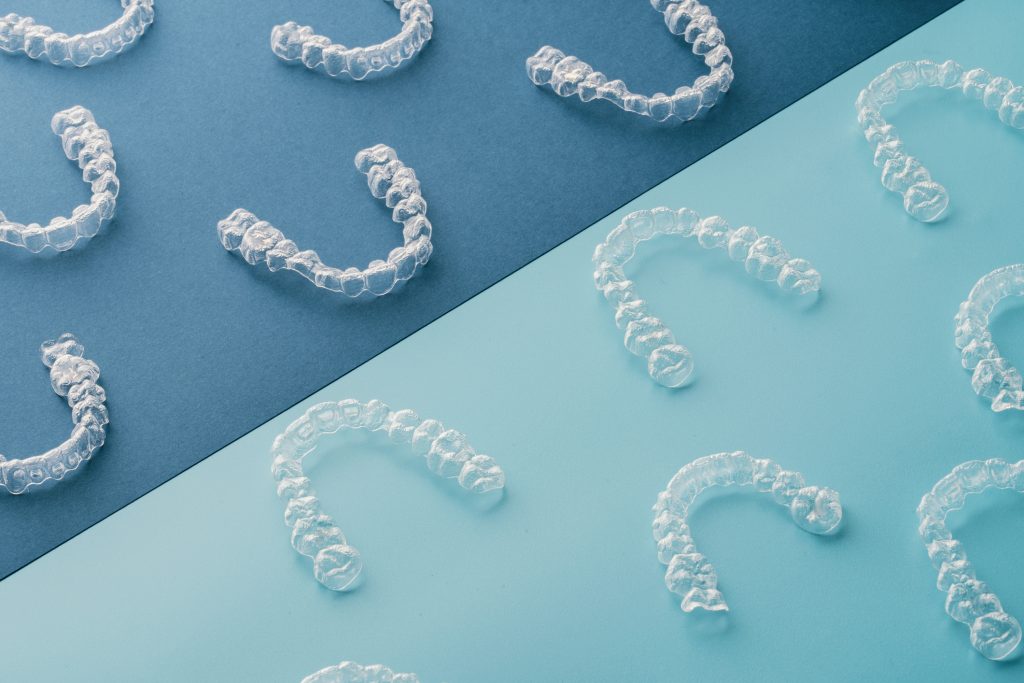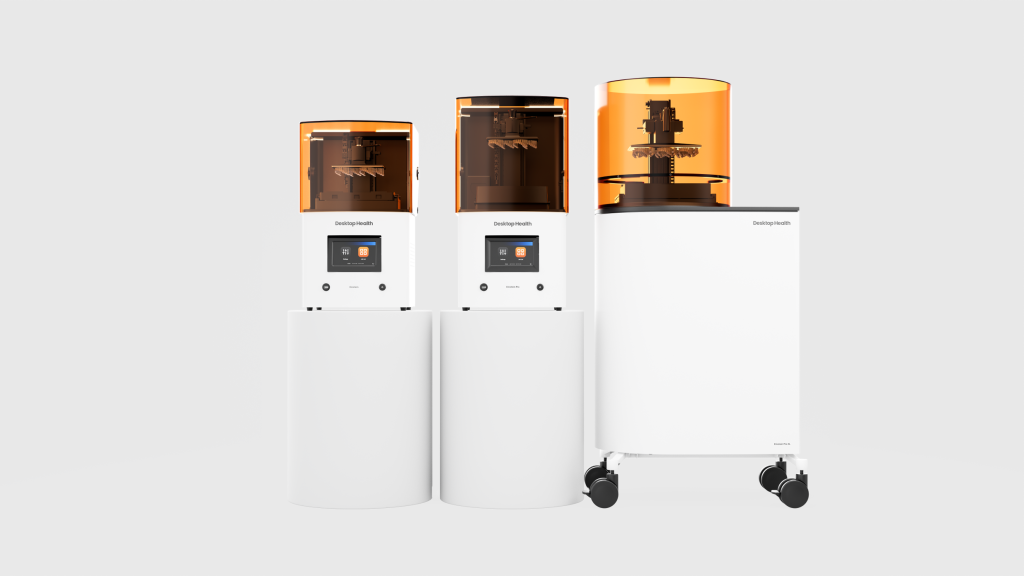A group of Germany, Egypt and UAE-based researchers have developed a novel 3D printed dental aligner that possesses ‘4D’ shape memory capabilities.
DLP-printed from Kline Europe’s transparent ClearX resin, the team’s orthodontic device is designed to soften once inserted into a user’s mouth, allowing it to adapt to, grip and reposition misaligned teeth. So far, the aligner has not only shown biocompatibility, but proven capable of predictably changing its properties over time, potentially making it an ideal alternative to single-use dental products.

The benefits of 4D tooth-alignment
As well as being less aesthetically-obvious than braces, and being easier to remove during meals, everyday dental aligners provide users with a more comfortable way of repositioning their wayward teeth. Currently made from various polymers, such devices tend to work by limiting the movement of teeth to a certain preset distance, with patients prescribed multiple of these to achieve a gradual repositioning.
However, according to the scientists, many popular aligners are only designed to move teeth 0.2 to 0.3 mm or rotate them from 1° to 3° at a time, while only lasting 14 days each, thus they take a long time to work and come at a high cost.
While the researchers acknowledge that 3D printing is already being deployed extensively in this area to address these issues, they maintain that research into “improving treatment efficiency” remains ongoing. In fact, the team says that the alignment speed “shortcomings of conventional materials” have become of high concern, but say that shape memory polymers (SMPs) could now help rectify this.
“[Prior] orthodontic aligner systems based on thermoresponsive shape memory polyurethane based thermoplastic materials, have shown the ability of one aligner to recover its shape through three steps of material treatment,” explain the team in their paper. “Consequently, they conduct stepwise tooth movement, in a way that one aligner may be able to replace three subsequent conventional aligners.”
“Through shape memory properties, they [4D aligners] can store a large number of geometries throughout orthodontic treatment.”

Honing a shape memory aligner
Citing a “lack of data in literature” about the potential of SMPs within dental aligner production, the researchers set out to assess this themselves, by developing their own heat stimuli-responsive devices. To begin with, the team leveraged a standard Asiga Max 3D printer and the ClearX resin, which is marketed as ideal for producing ‘shape-shifting aligners,’ to create six initial prototypes.
Once ready, these samples were submersed in hot water, before being applied to a mouth model that featured a deliberately misaligned tooth. During the process, the wax around this tooth softened, allowing it to be shaped by the dental typodont, after which it was cooled down to capture this imprint, before being reapplied at simulated mouth temperatures, with the aim of achieving a 3mm realignment.
Although the six 50 x 10 x 1.0 mm3 prototypes only proved capable of moving the tooth by 2.06–2.82 mm, the researchers say this still represents a significant improvement on current devices, around ten of which would be required to reach the same result.
The scientists also found that their devices were able to maintain the ‘light continuous force’ needed to accomplish gradual tooth movement more effectively. As opposed to conventional aligners, which the team believe to have a tendency to “return to their resting state” after prolonged use, they say their alternatives showed the ability to change shape on-demand, while maintaining their properties.
Moving forwards, the researchers therefore see great potential in their approach for cutting down the costs and lead times associated with aligner production, although they admit that their experiments didn’t fully replicate the humidity of the human mouth or the complexity of multi-tooth alignment, thus they say their devices still require further testing.

Commercial dental 3D printing
During the last few months alone, the growing popularity of 3D printing within the dental industry has prompted a whole host of manufacturers to launch new materials and machines, each designed to facilitate high-throughput aligner production, as they compete to carve out a niche in what is fast becoming a highly-lucrative market.
Earlier this month, 3D printer manufacturer Desktop Metal’s healthcare business unit Desktop Health, released its new Einstein range of dental systems. Powered by ‘HyperPrint’ technology, a process said to provide them with a speed boost of up to 50% compared to EnvisionTEC’s Envision One systems, these machines were launched alongside the complimentary FDA-cleared Flexcera Smile Ultra+ resin.
Late last year, desktop LCD 3D printer manufacturer UNIZ also began shipping its NBEE resin 3D printer. Designed specifically to address the high-volume production needs of dentists, the system combines speed, quality and usability to unlock aligner model, denture base, night guard, surgical guide, crown and bridge 3D printing applications.
Elsewhere, the likes of Prodways have now started to 3D print end-use products in extremely high quantities for dental customers as well. In December 2021, the company revealed that it had been commissioned to supply an unnamed ‘major industrial project,’ that will see its machines used to produce up to a million dental aligners per year.
The researchers’ findings are detailed in their paper titled “Potential Application of 4D Technology in Fabrication of Orthodontic Aligners.” The study was co-authored by Tarek M. Elshazly, Ludger Keilig, Yasmine Alkabani, Ahmed Ghoneima, Moosa Abuzayda, Wael Talaat, Sameh Talaat and Christoph P. Bourauel.
To stay up to date with the latest 3D printing news, don’t forget to subscribe to the 3D Printing Industry newsletter or follow us on Twitter or liking our page on Facebook.
For a deeper dive into additive manufacturing, you can now subscribe to our Youtube channel, featuring discussion, debriefs, and shots of 3D printing in-action.
Are you looking for a job in the additive manufacturing industry? Visit 3D Printing Jobs for a selection of roles in the industry.
Featured image shows a generic image of a batch of 3D printed dental aligners. Image via Prodways.



